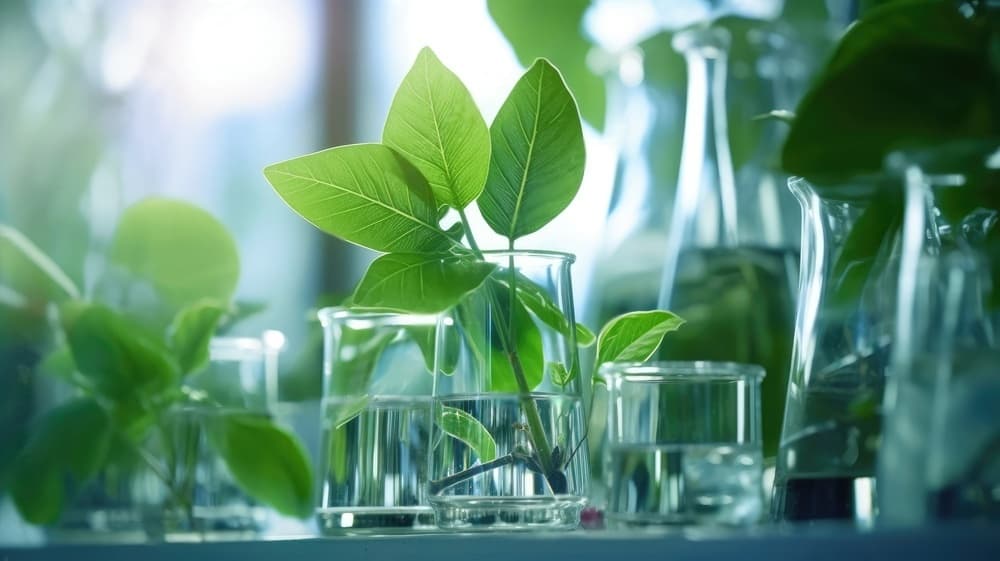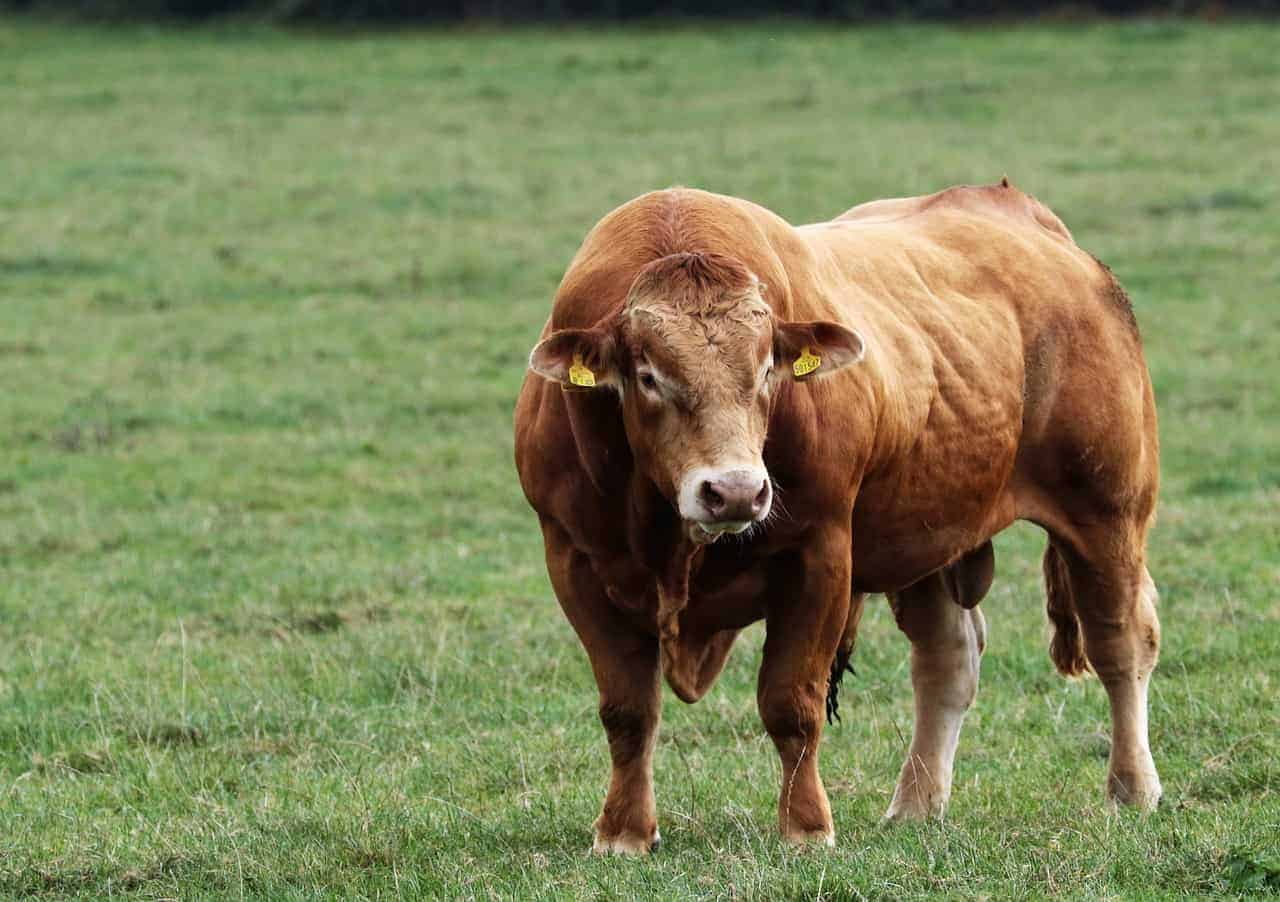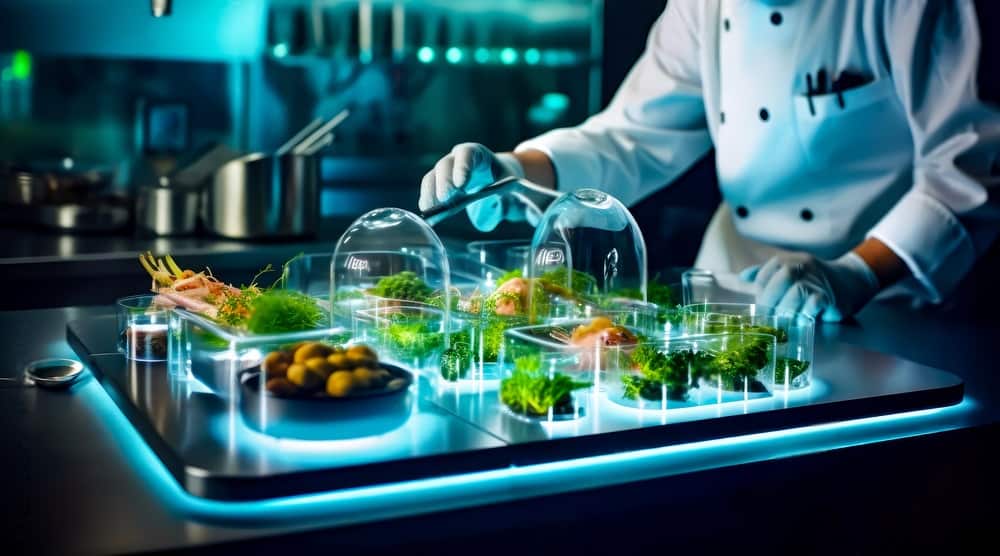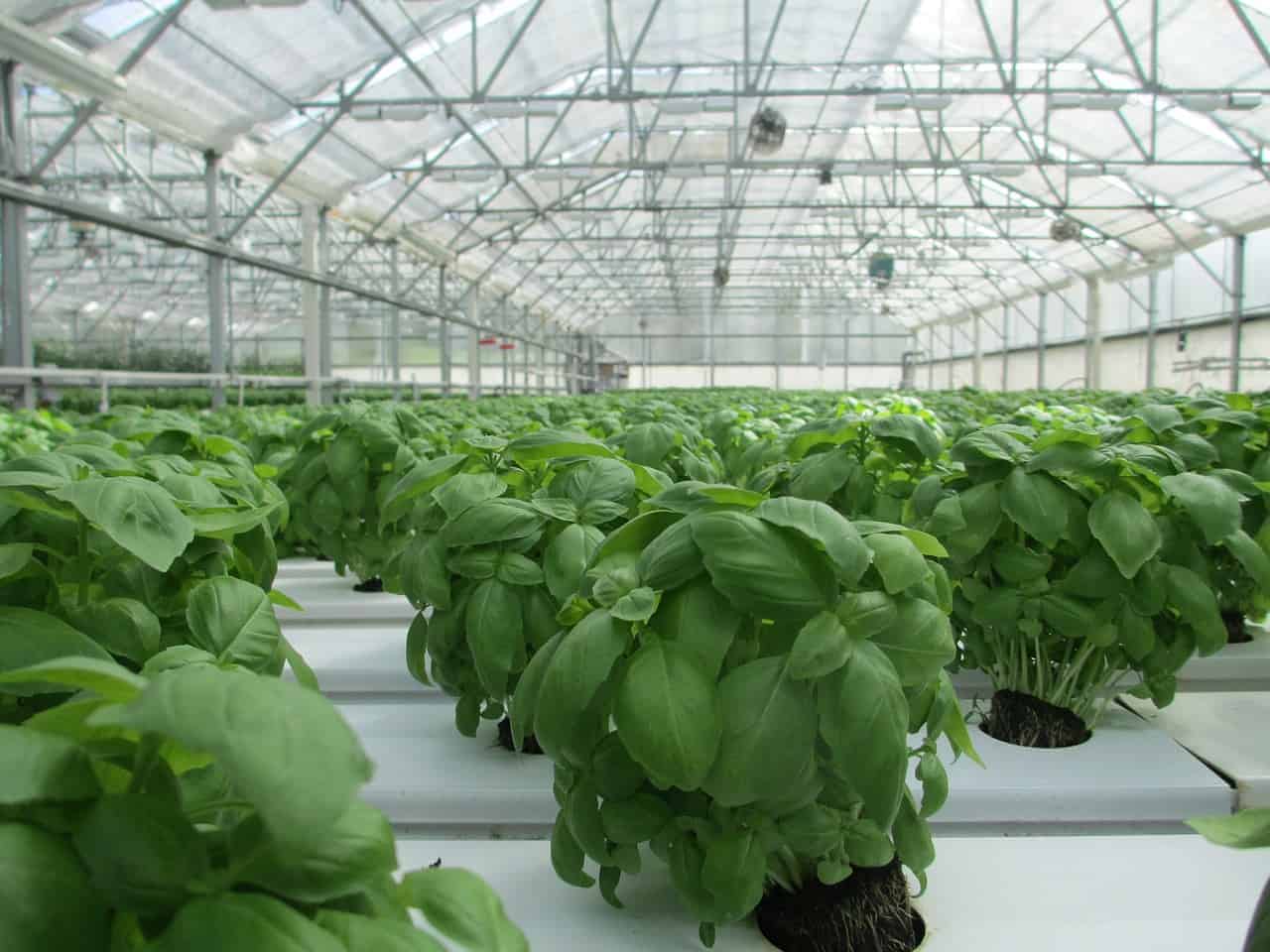RESEARCH & DEVELOPMENT
The researches at EnhancedExchange are active scholars who applied research and incorporate the latest academic developments and applied issues in their work. EnhancedExchange R&D program is built upon foundational research in the establishment of the understanding of plants and animals that have been domesticated and cultured to provide human foods. This understanding involves knowledge of the long-term evolution of these species as they existed in the wild, and knowledge as to how their domestication and culture by man continues to evolve. The climate of this dynamic environment has altered their biochemical, physiological, and ecological natures as to their functional capacities to produce desired food products™ and as to how their culture impacts our environment. This understanding sets the stage for present and future R&D as we use scientific evidence to achieve a healthy, sustainable food and agricultural innovative environment to fill the gap in our knowledge by developing a research agenda to assist decision makers to formulate sound agriculture, food, nutrition with the appropriate related policies and legal framework. EnhancedExchange performs research in the sciences underlying production system elements required to produce food products, providing desirable eating experiences and chosen by discerning consumers.

This research is performed both by in-house and extramural teams engaging cutting-edge scientists to develop disruptive technologies to assure product streams superior to customer expectations inclusive of designer food products™. Our analytical research and synthesis modeling undertake in studies examining the nexus of the food system, economic development, and the environment with important solutions to quantify how far each solution can get us. There is a big shortfall between the amount of food we produce today and the amount necessary to feed everyone in 2050. There are certain truths that EnhancedExchange is mindful of, such as there will be nearly (10) ten billion people on Earth by 2050 about (3) three billion more mouths to feed than there were in 2010. Another includes differentials as global economies improve enhancing standards of living in the developing world, people will increasingly consume more diverse resource-intensive, animal-based foods. At the same time, we urgently need to cut greenhouse gas (GHG) emissions from agricultural production and stop the conversion of remaining forests to agricultural land. Numbers have been provided such as a (56%) fifty-six percent food gap between crop calories produced in 2010 and those needed in 2050 under “business as usual” growth; a (593) five hundred ninety-three, million-hectare land gap between the global agricultural land area in 2010 and the expectation of agricultural expansion by 2050.
An (11) eleven-gigaton GHG mitigation gap between expected agricultural emissions in 2050 is a substantive number and in comparison, the target level necessary to hold global warming each requires ascertainable resources inaccuracy, monitoring, prevention and preparations not unlike those available to EnhancedExchange. The science, production, and technical awareness increases can apply towards the comprehensive education and EnhancedExchange practices within markets that in turn make a difference in the approximately one-quarter of food produced for human consumption that goes uneaten. Loss and waste occur all along the food chain, from the field to fork, which is each, composed of known measurable production and logistics processes. Reducing food loss and waste by way of our practices and education as known by (25%) twenty-five percent by 2050 would close the food gap by (12%) twelve percent, the land gap by (27%) twenty-seven percent and the GHG mitigation gap by (15%) fifteen percent. Consumption of ruminant meat (beef, lamb, and goat) is projected to rise (88%) eighty-eight percent between 2010 and 2050. Whereas, a topic of deliberations is the respective supply and demand for both low and high-grade ruminant beef and that of designer food products™ in each market.

Beef, the most commonly consumed ruminant meat, is resource-intensive to produce, requiring (20) twenty times more land and emitting (20) twenty times more GHGs per gram of edible protein than common plant proteins, such as beans, peas, and lentils. Ruminants are necessary in a world awash in fibrous plants that cannot be human foods and thus sink to natural resources. Ruminants provide the necessary path to make use of these natural resources bound in fibrous plants by facilitating their conversion to the most healthful, delicious foods in the world, red meats. Limiting ruminant meat consumption is a goal that compromises the need for these foods in human diets with their impact on the environment and their capacity to make large stocks of fibrous plants accessible to humans as foods. Limiting ruminant meat consumption to (52) fifty-two calories per person per day by 2050 about (1.5) one and one-half hamburgers per week would reduce the GHG mitigation gap by half and nearly close the land gap. This is achievable by both limiting over-consumption in the developed world while increasing consumption in the developing world, In North America, a comparison is viable, therefore in current numbers, this would require reducing current beef and lamb consumption by nearly half.
If bio-energy competes with food production by using food or energy crops or dedicated land, it widens the food, land and GHG mitigation gaps. Fibrous biomass is at issue, minimally, in that it is also an inefficient energy source: using all the harvested biomass on Earth in the year 2000 including crops, crop residues, the grass that is eaten by livestock, and wood, therefore, as a sum total would only provide about (20%) twenty percent of global energy needs as forecast in 2050. Phasing out existing biofuel production on agricultural lands would reduce the food gap from (56%) fifty-six to (49%) forty-nine percent. Livestock production per hectare varies significantly from country to country and is the lowest in the tropics. Given that demand for animal-based foods is projected to grow by (70%) seventy percent by 2050 and that pastureland accounts for two-thirds of agricultural land use, boosting pasture productivity is an important solution. A manageable effort undertaking for a (25%) twenty-five percent faster increase in the output of meat and milk per hectare of pasture between 2010 and 2050 could close the GHG land gap by (20%) twenty percent and the GHG mitigation gap by (11%) eleven percent. Future yield and quality growth are essential to keep up with demand.
Conventional breeding, the selection of best-performing crops based on genetic traits, accounted for around half of historical crop yield gains. New advances in molecular biology offer great promise for additional yield gains by making it cheaper and faster to map genetic codes of plants, test for desired DNA traits, purify crop strains, and turn genes on and off. Degraded soils, especially in dry-lands, may affect one-quarter of the world’s cropland. Farmers can boost crop yields in degraded soils, particularly dry-lands and areas with low carbon by improving soil and water management practices. For example, agro-forestry, or incorporating trees on farms and pastures, can help regenerate degraded land and boost yields. Planting and harvesting existing croplands more frequently, either by reducing fallow land or by increasing “double cropping” (planting two crops in a field in the same year), can boost food production without requiring new land, though will require nutrients to for producing an equivalent crop quality. Increasing annual cropping intensity by (5%) five percent beyond the 2050 baseline of (87%) eighty-seven percent would shrink the land gap by (14%) fourteen percent and the GHG mitigation gap by (6%) six percent.
Researchers should conduct more spatially explicit analyses to determine where cropping intensity increases are practical, most feasible, factoring in water, emissions, and other environmental constraints. Customers of EnhancedExchange are not just availing themselves to the safest, most savory fresh, frozen, organic, dried, dehydrated, jarred and canned designer food products™ available in the world today, they are also buying into food streams with their origins resulting from cutting-edge research. This research design is to answer fundamental questions with the goal of providing insight into the development of disruptive production, delivery technologies required to extend these streams into the future. The achievements are through provisioning of future products that have increased precision in exceeding expectations of targeted, discerning markets. These Research and Development (R&D), programs are conducted through both in-house and contracted research. The plethora of nutrition knowledge is making a healthy difference. Contracted research engages the most innovative scientists in the world on projects focused on these fundamental issues.

In-house research targets the orchestration of fundamental principles discovered in the contracted research into modifications in a production designed to increase food production value. The delivery systems design is to advance our production streams to increase the accuracy and precision of our fresh, frozen, organic, dried, dehydrated, jarred and canned designer food products in exceeding customer desires. In this manner research issues evolve into improvements, system modifications, including vendors and our dedication allow these R&D programs to begin and end with our customers. We begin by gaining an understanding of our customers, their cultural and culinary contexts in terms of the dynamics associated with their desires for eating experiences. We then translate these desires into visions of the characteristics of our designer food products™ requirements to exceed these desires. We then identify production, delivery system elements that stand in the way of delivering products having these characteristics. The next step is to identify at the most fundamental level, the biological principles governing the production of these products.
Ultimately, we translate understanding of these principles into production systems designed to consistently produce products with characteristics desired by targeted consumers and gauge how well these products meet expectations. EnhancedExchange academy is a nonprofit, nonpartisan independent division of EnhancedExchange dedicated to high-quality research, strategic capacity development, and purposeful engagement as well as provision for the education of the next generation of scientists and executives for the company. Drawing on the expertise of practitioners, policymakers, and academics, we aim to advance this platform while seeking to provide timely, where appropriate, policy-relevant commentary, insightful analysis, scholarly informative debates on topics, inclusive of contemporary issues. Our profile base is on open sources of food, designer food products™ their by-products, animal and plant science, and nutrition, which are each basic component from which we are to build new services, while aiming to strengthen relationships, in agro-ecology of crop along with animal and plant biotechnology, including food, meat, and beverage sciences.
EnhancedExchange research unit dedication is towards bringing professionals, including the insights of scholars to bear on the development of designer food products™, their by-products security, animal and plant science, food and nutrition, safety as well as quality challenges. We seek to offer ideas to advance regional prosperity, while providing a networking platform that allows professionals to come together to share resources, with ideas, while deploying best practices. Our focus is in accomplishing this with the simplicity that enhances insight to our readers on a nonprofit, nonpartisan, independent geopolitically neutral perspective basis to illuminate contemporary food security through the lens of history, geography, quality science, and culture. The undertaking of this initiative is for scientifically analyzing the respective developments, within a free monthly publication from a network of policy research institutes covering a wide range of topics. The discourse is made available on various foods, fresh, frozen, organic, dried, dehydrated, jarred and canned designer food products™ and their by-products, food sciences, animal nutrition, plant, economy, even ecological topics that highlight the quality and breadth of the work we publish while contextualizing some of the more pressing issues we face today through the generosity of EnhancedExchange.

The distinguished fellows and scholars of the unit conduct research on Agroecology, crop and animal biotechnologies, food along with their by-products, animal plus crop sciences including nutrition. We do this by actually collaborating with experts from academia, government, the media, business plus private organizations with the goal of bridging the gap between the theories with practice within international research networks. The key to EnhancedExchange research academy success is its institutional independence, which is guaranteed by the founding statute of the unit. EnhancedExchange academy basis of its work is on the interplay between research and training. These two areas complement each other as the factors responsible for the distinctive profile of the unit. The members of EnhancedExchange advisory board help ensure that our work is facts-based, data-driven, and customer-focused. They respectively bring real-world knowledge, expertise, each commonly suppressed, and that is invaluable to our sustaining efforts. EnhancedExchange and its members hope to unlock and synthesize their collective strengths, fortify their position as conscious leaders, and then take the right actions to shape our world for this generation and for the future.
Our resources of food, designer food products™ and their by-products, animal science and nutrition, our services and products will each expand as our publication content will also add to and inspire insight. Therefore, we are and remain open to learning and from which to build, provide new products as our source, expand then deliver new services into markets that recognize our designer food products™ in the community as we strive to increase market share. We are very excited to have the personnel in place and those to join us in a more formal capacity. We have therefore and continue in making determinations to seek to broaden our capacity, vision, and strategy. Heretofore, we advocate for our designer food products™ and services within the educational articles of our networking platform that allows professionals to come together to share resources, ideas, and best practices with the simplicity that enhances insight to our readers. We do this on a nonpartisan, geopolitical perspective basis to illuminate contemporary food security through the lens of history, geography, science, and culture while strengthening agriculture for a healthier future.
